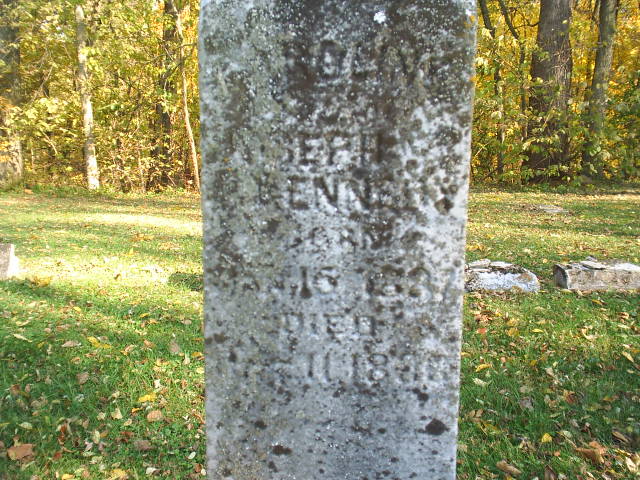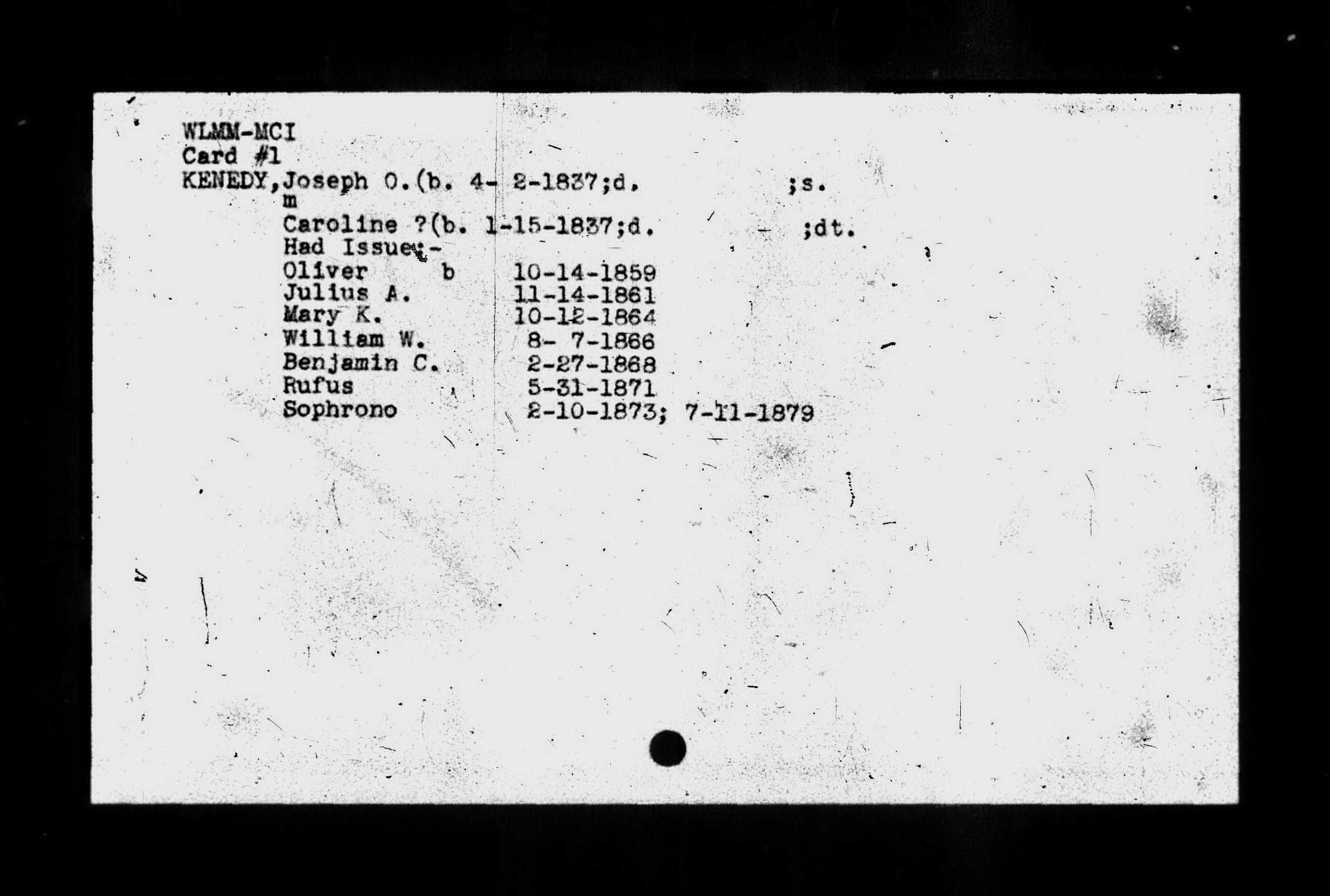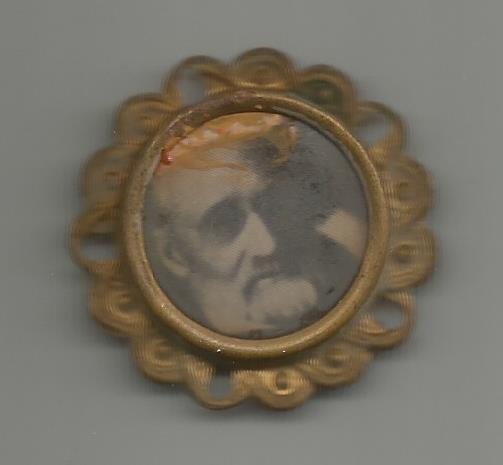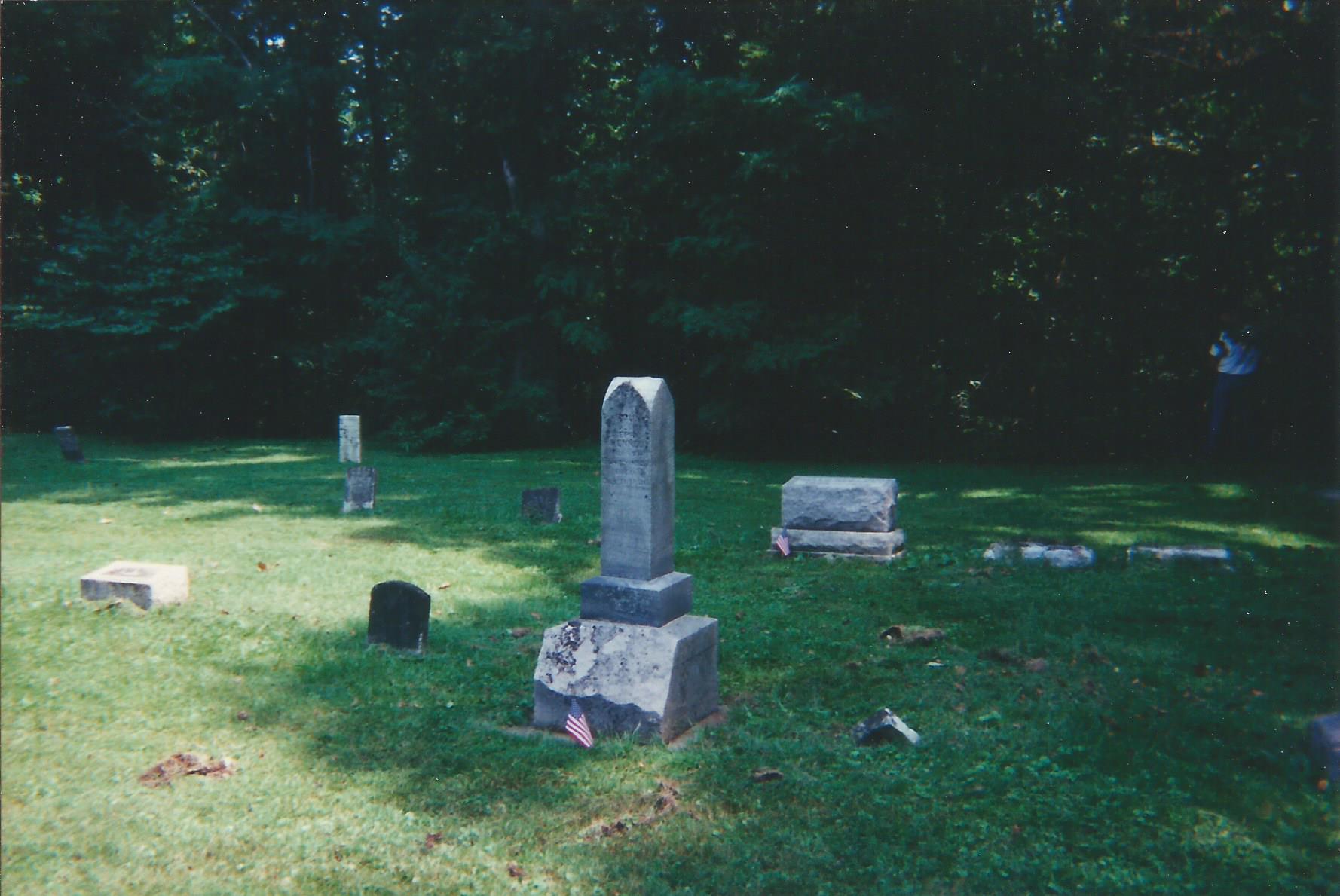On July 5,1863 he and his brother Emanuel was taken prisoner at Gettysburg after they was left behind to care for the wounded.
The brothers saw action at Kingston, Gettysburg and Kinnesaw mtn. to name afew. After the war the family moved to Hendricks county Indiana and settled near Plainfield and later near the Mill Creek area of Hendricks county. Joseph and Caroline was the parents of.. Oliver, Julius, William, Rufus, Mary, Benjamin,Sophronia, Elwood and Amanda..
Joseph is burried in a Now Un Marked Grave Next To His Wife Caroline.
1850 Census, Guilford County North Carolina
1860 Census, Guilford County North Carolina
1870 Census, Hendricks County Indiana
1880 Census, Hendricks County Indiana
1900 Census, Marion County, Indiana,
1123 West 28th Street.
45th Regiment, North Carolina Infantry
45th Infantry Regiment was organized at Camp Mangum, near Raleigh, North Carolina, in April, 1862, with men from Rockingham, Caswell, Guilford, and Forsyth counties. It served under the command of Generals Daniel and Grimes. After fighting at Malvern Cliff in Virginia, it returned to North Caroina and was stationed in the Kinston-New Bern area. During the spring of 1863 the unit moved north and took an active part in the campaigns of the Army of Northern Virginia from Gettysburg to Cold Harbor. It continued the fight with Early in the Shenandoah Valley and ended the war at Appomattox. It reported 2 killed and 14 wounded at Malvern Cliff, lost about forty percent of the 570 engaged at Gettysburg, and sustained 2 casualties at Bristoe and 6 at Mine Run. The unit surrendered with 7 officers and 88 men. The field officers were Colonels Samuel H. Boyd, Junius Daniel, John H. Morehead, and John R. Winston; Lieutenant Colonels Andrew J. Boyd and James S. Dalton; and Majors Samuel C. Rankin, Charles E. Shober, and T. McGehee Smith.
Gettysburg after battle report:
Report of Capt. J. A. Hopkins, Forty-fifth North Carolina Infantry.
July 17, 1863.
Sir: I have the honor to submit the following report of the action
of the Forty-fifth North Carolina Regt., in the battle of July 1,
2, and 3, near Gettysburg, Pa.:
When our line of battle was first formed, our position was on the
right of the Second North Carolina Battalion, Forty-third, Fifty-third,
and Thirty-second North Carolina Regt.'s on our right.
In this order we advanced over a large, open field, during which the
Forty-third and Fifty-third were moved to our left, the position of
the Forty-fifth then being on the left of the Thirty-second and on
the right of the Forty-third North Carolina Regt.'s.
After firing a short time, we were ordered to charge, in which a
very gallant one was made, driving the enemy back, but could not
reap the benefit of our gallantry, as we would have done had it not
been for a deep railroad cut in which about a fourth of the regiment
went to the bottom. The remainder fell back some 50 paces. Those
who were in the cut soon came out, bringing with them several
squads of prisoners, some 20 or 30 in number. The line was then
formed on the crest of a hill, where we retained our position, under a
heavy fire of grape, canister, and musketry.
During the reformation of this line, the regiment suffered more
than it ever did in the same length of time. Lieut.'s [George
F.] Boyd and [W. E.] Harris were killed; Capt. P. P. Scales mortally
wounded; Lieut.-Col. [S. H.] Boyd, commanding,
wounded; Lieut. Samuel F. Adams, jr., wounded--refused to go to
the rear, but remained until the fight was over. Our killed and
wounded among the enlisted men were very heavy.
The regiment was next marched by the left flank, and was moved
so as to obtain a position perpendicular to the railroad cut, and made
a charge on the wood in our front, capturing 188 prisoners in this
place and several smaller squads in other places. The flag of the
Twentieth North Carolina Regt. was recaptured by Capt. A. H.
Gallaway, and handed by him to a member of that regiment. We
also captured a very fine flag-staff and tassels; the remnants of what
had been a fine Yankee flag were lying in different places. The scenes
of the day then being over, the regiment retired near the railroad
embankment, where we rested during the night.
July 2, the line of battle was formed in a beautiful grove, which
skirted the northwestern part of the town, near a theological seminary.
The position of the Forty-fifth North Carolina Regt. was
on the right of the Forty-third and on the left of the Thirty-second
North Carolina Regt.'s, Maj. John R. Winston commanding.
Though wounded, he remained with the regiment. The fire of the
enemy's artillery was very heavy for several hours. The line was
somewhat screened by the crest of a small hill. Loss, only 1 killed;
10 or 12 wounded. Late in the evening, the regiment was moved
forward nearly half a mile, mostly in an open field, where we were a
part of the time under a severe fire of sharpshooters; but, taking
warning in time, we escaped their fire by lying down. The line then
fell back a short distance, and retired for the night.
July 3, the regiment marched very early to support Gen. Johnson.
Early in the day, the regiment was ordered over the crest of a
hill to some breastworks that had been abandoned by the enemy, the
Forty-fifth North Carolina Regt. being on the right and the
Forty-third North Carolina Regt. on our left. The three extreme
right companies were openly exposed, having no fortification before
them. The enemy was on a height, and well fortified.
The line of fortification was not parallel with our line of battle,
lacking perhaps 15 or 20 degrees, and about half the length of our
line in front, and a short [distance] to the right and in rear of this
line was another, leaving an open space between the two.
In a few minutes after we arrived at the abandoned breastworks,
the enemy commenced moving from behind the first line of breastworks
to the second. At that time almost every man of the regiment
was firing into them as they passed the opening, certainly killing
a great number. At times it seemed as if whole masses of them
would fall. At one time this continued cross-fire kept up for about
five minutes, in which time we killed more than in all our fighting
before and after.
Our loss was 7 in both killed and wounded. Maj. Winston severely
wounded; Capt. [James F.] Hodges severely, Capts. A. H.
and Thomas S. Gallaway slightly, and Lieut. [William] Paylor,
slightly; Lieut. James M. Benton killed late in the engagement, after
showing as much or more gallantry than any officer in the regiment,
though he was only seventeen years of age.
The fire was continued until our ammunition gave out. Gen.
Daniel being consulted, the Forty-fifth was relieved by the Thirty-second
North Carolina Regt.. Then, retiring under the hill, remained
there until nearly 11 p. m. The regiment was marched back
through Gettysburg; built small fortifications during July 4, and
marched in the direction of Fairfield the following night.
July 6, early in the morning, the regiment was sent to the rear, and
to the right of the road we came, and ordered to take position on a
hill which was covered with tall wheat. When we arrived there,
the enemy had possession of the hill. We found them to be dismounted
cavalry, with Confederate uniform in part. Some of the
men hesitated to fire at first, but soon being asked to surrender, the
fire commenced, and continued until the Yankees were driven back
over the hill beyond a fence which was in hedge bushes, where there
was a force held in reserve; what amount we did not learn, being then
ordered to rejoin our brigade.
Officers and men all behaved so well, it would be difficult to say
much more for one than for another.
Our loss was 1 killed and 3 wounded.*
I am, captain, very respectfully, your obedient servant,
J. A. HOPKINS,
Capt., Comdg. Forty-fifth North Carolina Regt.
Capt. W. M. Hammond,
Assistant Adjutant-Gen.
~~~~~~~~~~~~~~~~~~~~~~~~~~~~~~~~~~~~~~~~~~~~~~~~~~~
1905 Joseph O Kennedy 1201 W. 27th St. Lab
1907 Joseph O. Kennedy 1338 W. 27th St.
On July 5,1863 he and his brother Emanuel was taken prisoner at Gettysburg after they was left behind to care for the wounded.
The brothers saw action at Kingston, Gettysburg and Kinnesaw mtn. to name afew. After the war the family moved to Hendricks county Indiana and settled near Plainfield and later near the Mill Creek area of Hendricks county. Joseph and Caroline was the parents of.. Oliver, Julius, William, Rufus, Mary, Benjamin,Sophronia, Elwood and Amanda..
Joseph is burried in a Now Un Marked Grave Next To His Wife Caroline.
1850 Census, Guilford County North Carolina
1860 Census, Guilford County North Carolina
1870 Census, Hendricks County Indiana
1880 Census, Hendricks County Indiana
1900 Census, Marion County, Indiana,
1123 West 28th Street.
45th Regiment, North Carolina Infantry
45th Infantry Regiment was organized at Camp Mangum, near Raleigh, North Carolina, in April, 1862, with men from Rockingham, Caswell, Guilford, and Forsyth counties. It served under the command of Generals Daniel and Grimes. After fighting at Malvern Cliff in Virginia, it returned to North Caroina and was stationed in the Kinston-New Bern area. During the spring of 1863 the unit moved north and took an active part in the campaigns of the Army of Northern Virginia from Gettysburg to Cold Harbor. It continued the fight with Early in the Shenandoah Valley and ended the war at Appomattox. It reported 2 killed and 14 wounded at Malvern Cliff, lost about forty percent of the 570 engaged at Gettysburg, and sustained 2 casualties at Bristoe and 6 at Mine Run. The unit surrendered with 7 officers and 88 men. The field officers were Colonels Samuel H. Boyd, Junius Daniel, John H. Morehead, and John R. Winston; Lieutenant Colonels Andrew J. Boyd and James S. Dalton; and Majors Samuel C. Rankin, Charles E. Shober, and T. McGehee Smith.
Gettysburg after battle report:
Report of Capt. J. A. Hopkins, Forty-fifth North Carolina Infantry.
July 17, 1863.
Sir: I have the honor to submit the following report of the action
of the Forty-fifth North Carolina Regt., in the battle of July 1,
2, and 3, near Gettysburg, Pa.:
When our line of battle was first formed, our position was on the
right of the Second North Carolina Battalion, Forty-third, Fifty-third,
and Thirty-second North Carolina Regt.'s on our right.
In this order we advanced over a large, open field, during which the
Forty-third and Fifty-third were moved to our left, the position of
the Forty-fifth then being on the left of the Thirty-second and on
the right of the Forty-third North Carolina Regt.'s.
After firing a short time, we were ordered to charge, in which a
very gallant one was made, driving the enemy back, but could not
reap the benefit of our gallantry, as we would have done had it not
been for a deep railroad cut in which about a fourth of the regiment
went to the bottom. The remainder fell back some 50 paces. Those
who were in the cut soon came out, bringing with them several
squads of prisoners, some 20 or 30 in number. The line was then
formed on the crest of a hill, where we retained our position, under a
heavy fire of grape, canister, and musketry.
During the reformation of this line, the regiment suffered more
than it ever did in the same length of time. Lieut.'s [George
F.] Boyd and [W. E.] Harris were killed; Capt. P. P. Scales mortally
wounded; Lieut.-Col. [S. H.] Boyd, commanding,
wounded; Lieut. Samuel F. Adams, jr., wounded--refused to go to
the rear, but remained until the fight was over. Our killed and
wounded among the enlisted men were very heavy.
The regiment was next marched by the left flank, and was moved
so as to obtain a position perpendicular to the railroad cut, and made
a charge on the wood in our front, capturing 188 prisoners in this
place and several smaller squads in other places. The flag of the
Twentieth North Carolina Regt. was recaptured by Capt. A. H.
Gallaway, and handed by him to a member of that regiment. We
also captured a very fine flag-staff and tassels; the remnants of what
had been a fine Yankee flag were lying in different places. The scenes
of the day then being over, the regiment retired near the railroad
embankment, where we rested during the night.
July 2, the line of battle was formed in a beautiful grove, which
skirted the northwestern part of the town, near a theological seminary.
The position of the Forty-fifth North Carolina Regt. was
on the right of the Forty-third and on the left of the Thirty-second
North Carolina Regt.'s, Maj. John R. Winston commanding.
Though wounded, he remained with the regiment. The fire of the
enemy's artillery was very heavy for several hours. The line was
somewhat screened by the crest of a small hill. Loss, only 1 killed;
10 or 12 wounded. Late in the evening, the regiment was moved
forward nearly half a mile, mostly in an open field, where we were a
part of the time under a severe fire of sharpshooters; but, taking
warning in time, we escaped their fire by lying down. The line then
fell back a short distance, and retired for the night.
July 3, the regiment marched very early to support Gen. Johnson.
Early in the day, the regiment was ordered over the crest of a
hill to some breastworks that had been abandoned by the enemy, the
Forty-fifth North Carolina Regt. being on the right and the
Forty-third North Carolina Regt. on our left. The three extreme
right companies were openly exposed, having no fortification before
them. The enemy was on a height, and well fortified.
The line of fortification was not parallel with our line of battle,
lacking perhaps 15 or 20 degrees, and about half the length of our
line in front, and a short [distance] to the right and in rear of this
line was another, leaving an open space between the two.
In a few minutes after we arrived at the abandoned breastworks,
the enemy commenced moving from behind the first line of breastworks
to the second. At that time almost every man of the regiment
was firing into them as they passed the opening, certainly killing
a great number. At times it seemed as if whole masses of them
would fall. At one time this continued cross-fire kept up for about
five minutes, in which time we killed more than in all our fighting
before and after.
Our loss was 7 in both killed and wounded. Maj. Winston severely
wounded; Capt. [James F.] Hodges severely, Capts. A. H.
and Thomas S. Gallaway slightly, and Lieut. [William] Paylor,
slightly; Lieut. James M. Benton killed late in the engagement, after
showing as much or more gallantry than any officer in the regiment,
though he was only seventeen years of age.
The fire was continued until our ammunition gave out. Gen.
Daniel being consulted, the Forty-fifth was relieved by the Thirty-second
North Carolina Regt.. Then, retiring under the hill, remained
there until nearly 11 p. m. The regiment was marched back
through Gettysburg; built small fortifications during July 4, and
marched in the direction of Fairfield the following night.
July 6, early in the morning, the regiment was sent to the rear, and
to the right of the road we came, and ordered to take position on a
hill which was covered with tall wheat. When we arrived there,
the enemy had possession of the hill. We found them to be dismounted
cavalry, with Confederate uniform in part. Some of the
men hesitated to fire at first, but soon being asked to surrender, the
fire commenced, and continued until the Yankees were driven back
over the hill beyond a fence which was in hedge bushes, where there
was a force held in reserve; what amount we did not learn, being then
ordered to rejoin our brigade.
Officers and men all behaved so well, it would be difficult to say
much more for one than for another.
Our loss was 1 killed and 3 wounded.*
I am, captain, very respectfully, your obedient servant,
J. A. HOPKINS,
Capt., Comdg. Forty-fifth North Carolina Regt.
Capt. W. M. Hammond,
Assistant Adjutant-Gen.
~~~~~~~~~~~~~~~~~~~~~~~~~~~~~~~~~~~~~~~~~~~~~~~~~~~
1905 Joseph O Kennedy 1201 W. 27th St. Lab
1907 Joseph O. Kennedy 1338 W. 27th St.
Family Members
Sponsored by Ancestry
Advertisement
Explore more
Sponsored by Ancestry
Advertisement





















